In 1921, the history of the university began with the establishment of the Moscow Electrotechnical Institute of People's Communications (MEIPC) named after V.N. Podbelsky on the basis of the People's Communications Electrotechnical School.
In 1924, the institute had 27 educational laboratories and classrooms divided into five cycles: electrophysical, mechanical, telephone, telegraph, and radiotelegraph. Classes were taught by 6 professors and 70 teachers. The institute fully met the challenges of training highly qualified communications specialists.
In 1924, MEINS became part of the Moscow Higher Technical School (MHTS), forming the weak currents department of the school's electrotechnical faculty.
In 1930, the institute was restored under its former name.
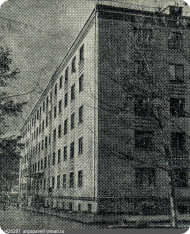
In 1931, construction began on a separate building complex at 8A Aviamotornaya Street, where the university is located today.
In 1941, with the outbreak of the Great Patriotic War, the MIEC was evacuated to Tashkent, where the Odessa Institute of Communications Engineers temporarily became part of it.
In 1946, MIIS, like other higher educational institutions of communications, was briefly transferred to the jurisdiction of the USSR Ministry of Higher Education and at the same time was renamed again to the Moscow Electrotechnical Institute of Communications (MEIC).
In 1956, the first problem-solving and then industry-specific research laboratories were organized. They were staffed with permanent scientific and engineering personnel, which marked the beginning of the large research and development unit of MTUCI that exists today.
In 1969, a faculty of advanced training for university and technical school teachers was opened. At the same time, 2 new student dormitories, a laboratory building, a residential building for teachers, a new building of the scientific and technical library, experimental workshops, and a canteen were built.
In 1971, MEIS was awarded the Order of the Red Banner of Labour for great merits in training personnel and for the results of scientific research and development.
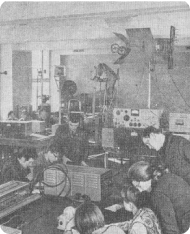
In 1988, the Moscow Institute of Communications (MIC) was established on the basis of three institutes: MEIC, the All-Union Correspondence Electrotechnical Institute of Communications (AUCEIC), and the Institute for Advanced Training of Managers and Specialists (ATMS).
In 1992, by order of the Government of the Russian Federation, MIS was transformed into the Moscow Technical University of Communications and Informatics (MTUCI).
In 1993, the All-Union Correspondence College of Communications and the Podbelsky Polytechnic College of Communications joined the university as colleges.
In 2020, the new faculty of Cybernetics and Information Security was opened.

In 2022, Russia's first cyber range with the functionality of quantum key distribution and Luban Workshop, Russia's only training center for specialists in working with 5th generation networks, were opened.
In 2023, a high-tech Training Center for Integrated Security and dozens of advanced technology centers were opened.
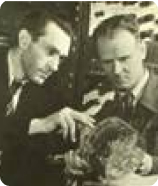
The university successfully develops scientific schools recognized in Russia and abroad, created by famous scientists in the field of telecommunications, radio engineering and computer science - G.Z. Aizenberg, N.A. Baev, I.E. Goron, I.I. Grodnev, O. N. Ivanova, A. N. Kazantsev, S. I. Kataev, B. R. Levin, G. A. Levin, S. S. Nadenenko, S. D. Pashkeev, V. B. Pestryakov, A. A. Pistolkors, M.A. Sapozhkov, B.P. Terentyev, V.V. Furduev, N.I. Chistyakov, V.V. Shakhgildyan and others.
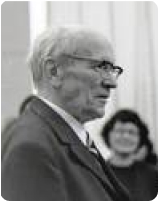
The works of Prof. S.I. Kataev - one of the leading developers of the first television devices in Russia; prof. S.V. Novakovsky, who for a long time headed the work on creating a color television system. We are proud of our graduate, activist of the student scientific society of the institute, academician Ya.Z. Tsypkin, one of the creators of the theory of pulsed automatic control, and many other graduates who became prominent scientists and major specialists in the communications industry.
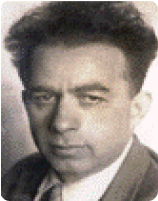
Antenna device specialists are well aware of the name of G.Z. Eisenberg. All domestic antenna technology bears the imprint of his original and bright ideas. Under the leadership and with the direct participation of G. Z. Eisenberg, antennas were created and put into operation for all domestic radio relay, tropospheric and satellite radio communication systems, systems for collective reception of television programs, unique short-wave antennas for radio broadcasting, etc.
Prof. I.E. Goron - the founder of the Department of Radio Broadcasting and Electroacoustics, the head of the Moscow House of Sound Recording - back in the years of the pre-war five-year plans, he developed and put into operation the world's first system for transmitting sound broadcasting signals over long distances via long-distance communication channels, participated in the development of the Central Broadcasting Equipment Room, the feature of which was remote control and “Goron” end-to-end signaling scheme. Under his leadership, work was carried out to create the first domestic professional tape recorders "MAG", research and development of methods for the restoration of gramophone recordings, and the development of stereophonic systems and devices. Together with prof. N.I. Chistyakov I.E. Goron created a system for transmitting broadcast programs over power distribution networks. In this way, the entire south of Russia was radio-fed, and the experimental zone was installed in the MEIS buildings. Similar systems are now in place on many college and military campuses in the United States.
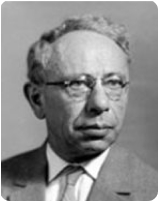
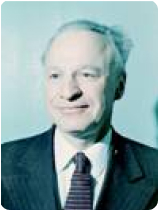
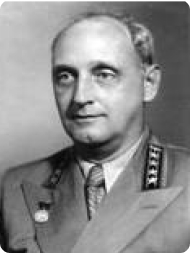
According to the recollections of veterans of the institute, V.V. Furduev was a bright personality: students and graduate students adored him. Vadim Vladimirovich, a highly educated man, fluent in several foreign languages, was an excellent lecturer, had an aristocratic appearance, and amazingly enjoyed the richness and beauty of Russian speech. Nowadays, in connection with the widespread introduction of multi-channel sound reproduction systems, it is customary to refer to the developments of foreign authors, but few people know that the psychophysical, systemic and technical aspects of domestic electroacoustic systems were developed long before them and were introduced into the practice of domestic cinematography and large concert halls. The theorist of these works was V.V. Furduev, for which he was awarded first the State (1949) and then the Lenin (1962) prizes.
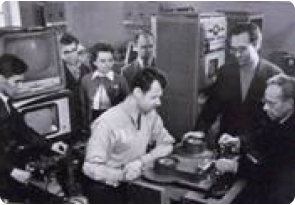
The laureates of the Government of the Russian Federation awards in the field of science and technology, as well as in the field of education are corresponding member. RAS, prof. V.V.Shakhgildyan, professors A.S.Adzhemov, V.B.Bulgak, E.V.Evreinov, V.B.Kozyrev, A.A.Lyakhovkin, I.A.Mamzelev, M.S. Shumilin. Professors G.Z. Aizenberg, I.E. Goron, B.P. Terentyev, S.I. Kataev, L.A. Zhekulin, M.A. Sapozhkov were awarded honorary titles of Honored Workers of Science and Technology of the RSFSR and the Russian Federation.
Along with in-depth theoretical scientific research, the institute has been conducting various applied developments of new equipment and promising technologies in the field of telecommunications and computer science for many decades, and also carries out mass production of equipment developed within its walls.
50s
Active scientific and technical developments began at the institute in the early 50s of the last century. However, most of them were focused on the priority needs of our industry. It was then that the first “problem laboratories” were created at NIO MEIS: “Application of magnetic recording in communication technology” (scientific supervisor - Prof. I.E. Goron), “Application of electronics in telegraphy and telephony” (Prof. B.P. Terentyev and Prof. E.V. Markhai), as well as “Economics and organization of communications” (Associate Professor L.M. Soloveichik) (f.043). Only in five years - from 1955 to 1961. – the volume of research and development work at the institute increased more than 9 times and reached 940 thousand rubles. in year. During these same years, experimental workshops were created at the institute, which later turned into pilot production.
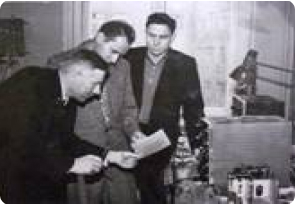
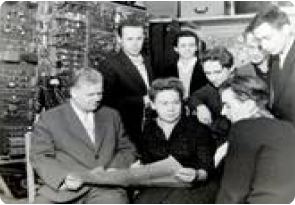
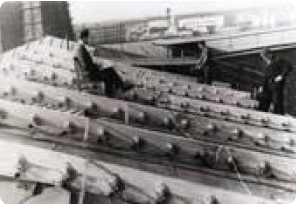
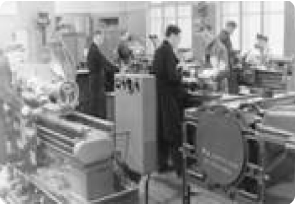
Research in the field of electroacoustics, conducted under the guidance of professors V.V. Furduev and I.E. Goron, has received great development. It was then that the most complex experimental research work was carried out aimed at creating a distributed sound reinforcement system for the Congress Hall of the Palace of Culture and Science in Warsaw. At the same time, in order to evaluate the distribution of the sound field in open space, a unique electro-acoustic system was mounted on the roof of the main building of the institute. Subsequently, the results of this work were widely used in the design of the sound reinforcement system of the Kremlin Palace of Congresses and other similar objects.
Magnetic recording was just emerging in our country, but at the first post-war exhibition of scientific and technical creativity of students, graduate students and teachers in 1953, a tape recorder and even a television and radio tape recorder, assembled by the hands of students, were already demonstrated.
Magnetic recording was used for repeated re-reception of phototelegrams at communication centers, while V.A. Vatsenko’s group mounted a mock-up of the installation, which used the principle of recording phototelegraph signals on a hard ferromagnetic drum-type carrier. The country’s first “Talking Clock” equipment was built on the same principle to organize an “accurate time service” on the telephone network. This theme has been preserved at the institute to this day: even now in Moscow and many cities of the country, by dialing “100”, subscribers hear the exact time from our serially produced equipment, built, however, on more modern principles. Then these developments formed the basis for the creation of numerous automatic information devices, the so-called telephone “autoinformers”.
60s
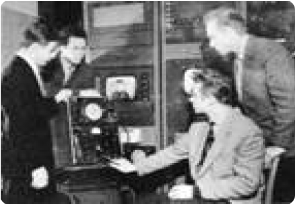
In the sixties, television began to develop rapidly in our country. The Institute did not remain aloof from this process. In particular, under the leadership of prof. Kataeva S.I. with the active participation of B.P. Khromy, now our professor, a unique “electronic rear projection” equipment for that time was developed for the Moscow television center, which made it possible to combine images from two cameras on the TV screen - the announcer and any other subject. Subsequently, this equipment was introduced at many television centers in the country. Now we see similar television scenes, for example, when we watch the news or weather forecast.
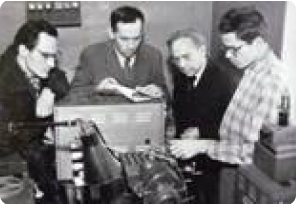
Work has also expanded in the field of magnetic recording: under the leadership of prof. Gorona N.I. talented engineer A.G. Kulgachev created one of the first domestic video recorders for recording industrial television signals. G.A. Pankov began to carry out work on the use of magnetic recording technologies for non-destructive testing of various parts of complex profiles, including aircraft turbine blades, gears, and bearings. As a result, an original semi-automatic flaw detector was developed and several copies were manufactured, which were introduced into industry. On the initiative of Prof. I.E. Goron, young engineers at that time M.G. Arutyunov and V.G. Patrunov, using the principles of magnetic recording, created a number of high-speed character-printing devices of the “Phase” type for outputting data from computers that had just appeared at that time.
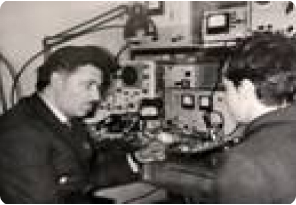
Equipment for remote monitoring of quality parameters of audio broadcasting paths was developed by V.A. Nuremberg’s group and was mass-produced by enterprises of the Hungarian People’s Republic and the Moscow City Radio Broadcasting Network. At the Department of Radio Transmitting Devices under the guidance of Professor and corresponding member. RAS V.V. Shahgildyan began research into systems, the so-called “phase-locked loop”, the results of which formed the basis for the creation of frequency synthesizers for transmitting and receiving communications and broadcasting equipment, first for military purposes, and then for civilian ones. Now they are used in almost all modern radio stations, radio and television receivers, as well as mobile communication devices.
70s
The 70s were marked by the rapid development of telephone communications: ten-step telephone exchanges replaced ten-day ones. Quasi-electronic and later fully electronic switching systems were developed for the country's telephone networks. A significant contribution to this process was made by the institute’s specialists under the leadership of prof. O.N. Ivanova, who wrote the country's first textbook on electronic switching and programming in automatic telephone exchanges. Under the guidance of prof. G.B. Metelsky developed a methodology for constructing high-capacity urban telephone networks, which was used by design organizations until very recently, when telephone communications began to switch to VoIP technology.
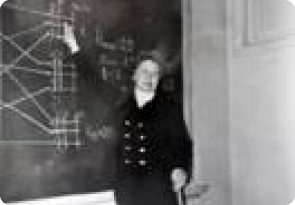
In general, the institute at that time paid special attention to the issues of “electronization” of communication technology. So prof. B.P. Terentyev spent many years creating and improving the electronic-mechanical telegraph apparatus; in the early 60s, its first prototype appeared, and in the 70s a serial model was developed, which for many years was produced by one under the brand name “RTA-80” from factories in Kaluga. In connection with the introduction of the Orbita satellite television broadcasting system in the country, Yu.B. Zubarev, now a corresponding member. RAS - under the guidance of prof. S.I. Kataev developed equipment for pulsed transmission of television audio with high noise immunity.

The advent of powerful high-frequency transistors made it possible to create highly efficient amplifiers for radio transmitters. The efficiency of tube amplifiers rarely exceeded 25%, that is, 3/4 of the power they consumed was converted into heat; It’s not for nothing that there are fountains in the territories of old radio transmission centers - it was in them that the water cooled down, cooling the anodes of powerful radio tubes. New amplifiers developed by a team led by prof. V.V.Shahgildyan, provided an efficiency of more than 80%. Radio transmitters built on their basis have been widely used in our country. The development of radar methods, which rapidly occurred in the 50s both abroad and in our country, in particular, at the Institute of Radio Electronics (IRE) of the Russian Academy of Sciences, led to the creation of so-called “noise-like” signals. At our institute, their capabilities were seriously studied by a group of young scientists led by L.E. Varakin - future professor and rector of the correspondence institute. As a result, it was proposed to use broadband noise-like signals for radio communications. These signals are barely noticeable on the radio, so they have found very wide application in the creation of military radio stations, and later in some cellular telephone communication systems. For example, similar signals are used by cell phones of the famous Russian operator Sky Link.
80s
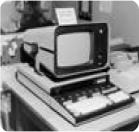
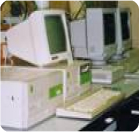
In the eighties, the public telegraph network was transferred to a message switching system that was progressive for that time. In this regard, the documentary telecommunications laboratory is developing the so-called “Telegraph-Automatic”, and then the Telegraph Message Concentrator (CTS), built on the basis of domestically produced microcomputers and intended for complex automation of regional communication centers. These products, repeatedly modernized (now called a documentary message concentrator), were mass-produced by us until the mid-90s and were installed in more than 200 communication centers in the country.
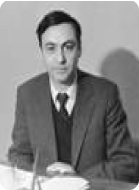
The advent of powerful high-frequency transistors made it possible to create highly efficient amplifiers for radio transmitters. The efficiency of tube amplifiers rarely exceeded 25%, that is, 3/4 of the power they consumed was converted into heat; It’s not for nothing that there are fountains in the territories of old radio transmission centers - it was in them that the water cooled down, cooling the anodes of powerful radio tubes. New amplifiers developed by a team led by prof. V.V.Shahgildyan, provided an efficiency of more than 80%. Radio transmitters built on their basis have been widely used in our country. The development of radar methods, which rapidly occurred in the 50s both abroad and in our country, in particular, at the Institute of Radio Electronics (IRE) of the Russian Academy of Sciences, led to the creation of so-called “noise-like” signals. At our institute, their capabilities were seriously studied by a group of young scientists led by L.E. Varakin - future professor and rector of the correspondence institute. As a result, it was proposed to use broadband noise-like signals for radio communications. These signals are barely noticeable on the radio, so they have found very wide application in the creation of military radio stations, and later in some cellular telephone communication systems. For example, similar signals are used by cell phones of the famous Russian operator Sky Link.
90s
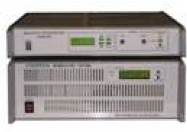
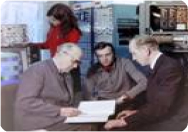
In the eighties, the public telegraph network was transferred to a message switching system that was progressive for that time. In this regard, the documentary telecommunications laboratory is developing the so-called “Telegraph-Automatic”, and then the Telegraph Message Concentrator (CTS), built on the basis of domestically produced microcomputers and intended for complex automation of regional communication centers. These products, repeatedly modernized (now called a documentary message concentrator), were mass-produced by us until the mid-90s and were installed in more than 200 communication centers in the country.
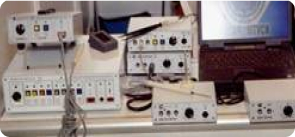
The creation of small-sized high-frequency generators for radio transmitters made it possible to begin the development and subsequently mass production of electrosurgical equipment that allows cutting living tissue with minimal damage to the skin. This equipment has been supplied in large quantities to many medical institutions and is widely used by them for operations in the field of facial surgery, dentistry, etc.
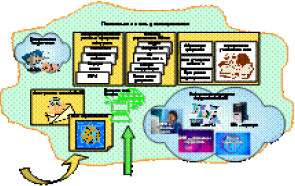
At the turn of the new millennium, developments in the field of computer science and infocommunications began to come to the fore. One of these developments was the Federal University Distance Learning Network for educational institutions of higher professional education,” developed by a team under the leadership and with the direct participation of prof. A.S. Adzhemova. It was awarded a prize from the Government of the Russian Federation in the field of education. In the 2000s, the same team of performers created the “Electronic University” system, which is designed for effective management of the university and the introduction of modern teaching methods. The system is based on a fundamentally new organization of the educational process and office work using modern information and network technologies.
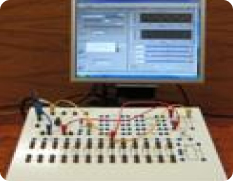
In order to instill practical skills in working with measuring instruments when studying electrical engineering and other disciplines in universities and colleges, a Universal Hardware and Software Laboratory Bench (APLS-U) was created, combining virtual generator and measuring instruments with the electrical circuits under study physically implemented on a typesetting field. It came, in particular, to replace the one widely used in universities and technical schools, developed and mass-produced in our country in the 80s of the last century, under the leadership of Assoc. I.N. Dobrotvorsky, laboratory stand for studying the course “Theory of linear electrical circuits”.
A number of new developments were created by a team headed by prof. S.S. Adzhemov. These are: a complex of simulation modeling of satellite telecommunication systems, allowing for their design, calculation and assessment of characteristics, including coverage of the earth's surface, communication reliability, electromagnetic compatibility of various ground-based and space-based systems operating in adjacent frequency ranges; software and hardware complex for predicting ionospheric parameters, designed to calculate the parameters of the ionospheric shortwave communication channel depending on the frequency, session time and location of the subscriber; broadband panoramic device for detecting and processing radio signals “Moroshka” for monitoring radio broadcasts, which is used in radio frequency centers of the country.
Under the guidance of prof. A.V. Petryakova developed a complex for monitoring the location of sea vessels based on a satellite tracking system.
Currently, promising areas of scientific and technical activity of the university are research and development: in the field of information security and secure telecommunication systems; introduction of digital television and radio broadcasting, including high-definition television; development of next-generation communication networks, in particular, photonic networks and networks based on MESH technologies; development of a concept for creating a fundamentally new satellite communication system based on a combination of constellations of low-flying and high-orbiting satellites.
Such a community significantly expands the material and technical base of the university, creates new jobs, and promotes closer interaction between education and production.
MTUCI today
Today MTUCI is a large educational and scientific center for the training and retraining of highly qualified specialists in the field of telecommunications, computer science, radio engineering, economics and management. The University includes two regional branches in the cities of Rostov-on-Don and Nizhny Novgorod, a Scientific Center, an Institute for Advanced Studies, College of Telecommunications, Center for Pre-University Training, Educational and Scientific Test Site for New Technology. The teaching and scientific staff of MTUCI numbers about 700 people. Among them are over 100 professors and more than 400 candidates of science and associate professors. Among the University's teachers are full members and corresponding members of a number of Russian and international academies, laureates of the Lenin and State Prizes, awards of the Government of the Russian Federation. About fourteen thousand full-time and part-time students, graduate students, and students of various courses study at the University. Training is carried out according to a modern multi-level education system - bachelor, engineer, master - in 25 specialties and 8 areas.
Much attention at the university is paid to student research work, in which more than 900 full-time students participate as part of a single educational and scientific process. The main directions of their activities: individual targeted training of specialists at the request of enterprises, participation in contractual and state budget research work, classes in specialized clubs and schools, participation in scientific conferences and seminars, competitions, exhibitions of scientific and technical creativity of young people and Olympiads. The winners of exhibitions, competitions and olympiads have been repeatedly awarded medals and diplomas from the Russian Ministry of Education and Science, diplomas from Russian and foreign companies such as Cisco Systems, Ericsson, Alcatel-Lucent, etc. In recent years, educational work among students has intensified significantly. It is aimed at implementing creative, sports, social and civil-patriotic projects; to improve general culture, acquire a clear civic position, realize creative abilities and promote a healthy lifestyle. Students actively participate in various youth festivals, competitions, and championships; receive numerous prizes and diplomas. The university is the lead university in the Educational and Methodological Association for Education in the Field of Telecommunications (UME). It consists of higher education institutions that implement basic educational programs in the areas and specialties of higher professional education that fall within the competence of the UMO. Today, UMO has over 80 universities not only in the Russian Federation, but also in neighboring republics.
Active international cooperation has continued at MTUCI for almost 70 years. During this time, the University has become a real forge of qualified personnel for many foreign countries. Among its thousands of graduates are famous scientists, prominent government and public figures, major specialists in various fields of economics in many countries in Europe, Asia, Africa and Latin America. The main areas of international cooperation: training and advanced training of foreign citizens in higher and postgraduate education programs; implementation of joint educational programs; exchange of students and teachers; internship of specialists under direct contracts with leading technical universities; creation of joint training centers with leading telecommunications companies in the world; joint research projects; exchange of scientific information with foreign companies and universities; holding joint conferences, symposiums, seminars; participation in projects and programs conducted by leading international organizations and foundations in the field of education and information and communication technologies. Since 1946, the University has trained several thousand masters, bachelors, engineers, and more than 360 candidates of science from 82 countries. Currently, the university has more than 400 undergraduate and graduate students from 48 countries in Europe, Asia, Africa and Latin America.
MTUCI's policy is aimed at integrating with the international university community and thereby obtaining additional opportunities for accelerated development and competitive advantages. In this regard, the University has a solid basis in the form of many years of strong partnerships with leading European Universities and educational organizations. Currently, international cooperation is organized on the basis of cooperation and direct ties in the field of educational, scientific, technical, educational, methodological and cultural activities. The Agreements, most of which were concluded by MTUCI in accordance with international agreements of the Russian Federation, involve 48 universities from 46 countries, including 11 universities from 7 CIS countries (Armenia, Kazakhstan, the Kyrgyz Republic, Latvia, Uzbekistan, Ukraine, Belarus ).As part of international cooperation, MTUCI organized short-term internships for several thousand people from 82 countries in Europe, Asia, Africa and Latin America within the framework of both bilateral agreements with foreign partner universities and international programs (TACIS, TEMPUS and others). More than 200 specialists from among teachers, staff, graduate students and students are sent to foreign universities every year.
MTUCI is an active participant in the implementation of the Bologna Process decisions aimed at integrating European education systems. The university, together with foreign universities, implements “double degree” programs for bachelors and masters in the field of ICT. To expand the number of foreign students, MTUCI offers a multi-level blended learning program in English and Russian.
MTUCI maintains close contact with its graduates. MTUCI Alumni Associations have been created and operate successfully in many countries. Graduates of the University occupy prominent government positions (ministers and deputy ministers of Vietnam, Mongolia, Mali), became famous scientists, teachers (Latin America, Syria, Jordan, etc.), major specialists in the field of telecommunications (Mozambique, Yemen, Burundi), head many international telecommunications and computer science organizations (Uzbekistan, Kazakhstan, Kyrgyzstan).
In order to implement Agreements on economic, scientific and technical cooperation of the Russian Federation with foreign countries (Bulgaria, Malaysia, Canada, Korea, etc.), Permanent Working Groups have been created, the active participants of which are University employees.
One of the main areas of international activity is the creation of joint Training Centers with leading telecommunications companies in the world. Training centers operate successfully on the basis of the university, in particular:
Ericsson Training Center;"Cisco Systems"; "Huawei" .
All Training Centers are equipped with modern equipment - electronic telephone exchanges of various capacities, mobile and radio relay communication stations, computer classes. In their work they use not only the latest telecommunications, but also educational technologies. The main tasks of the centers are to train Russian specialists to work on the equipment of relevant companies, as well as to train students, interns and graduate students of MTUCI using the most advanced telecommunications equipment. The university takes part in a number of international projects, including the implementation of ITU projects and programs. One of the nodes of the worldwide network of ITU Centers of Excellence has been created on the basis of MTUCI. The goal of the Center is to improve the skills of managers and specialists in the telecommunications industry with the prospects of forming a unified educational space. Our unit has two programs – Corporate Management and Information and Communication Technologies. Under these programs, the university coordinates the preparation and conduct in different countries of international seminars and distance learning courses for Russian-speaking senior and middle managers in the CIS countries.
Recently, special attention has been paid to participation in various projects carried out by international organizations and foundations, in particular, CORDIS, TEMPUS, COST. As part of these projects, MTUCI, together with a consortium of universities in Eastern and Western Europe, is carrying out a number of research projects in the field of ICT.
At the Institute for Advanced Studies (IPK) of MTUCI, more than two thousand managers and specialists annually undergo advanced training and retraining in all major areas of telecommunications, computer science, management, marketing, economics, accounting, and computer technology. The IPK has a good material and technical base: 17 classrooms and laboratories, a hotel complex with single and double rooms for 190 people with all amenities; There is a telecommunications network that includes switching stations, SDH and PDH equipment, radio relay stations, radio access equipment, and modern measuring equipment. Every year the number of courses conducted via distance learning and on-site seminars increases.
The IPC implements DBA-INFOCOM and MBA-INFOCOM - professional retraining programs for highly qualified managers. These are exclusive programs for top management in the information technology and communications industry. They are aimed at training a new generation of managers capable of developing business strategy and effectively using the latest business technologies in infocommunications. The MBA program is protected by a State license and was the first in Russia to undergo state certification and accreditation by the Ministry of Education of the Russian Federation.
23 special courses have been developed under the Program of the “Integrated Multiservice Telecommunication System of Internal Affairs Bodies of the Subjects of the Russian Federation.” Since 2006, over a thousand employees of the Ministry of Internal Affairs have been trained in the IPC under this Program.
Since 2007, joint work has begun with the Federal State Unitary Enterprise “Russian Post” on comprehensive training for post office managers. The program was developed taking into account the specifics of the postal industry. It consists of three modules devoted to various types of activities of post office managers: Management, Marketing and Postal Technologies. Courses for postmasters are now running on an ongoing basis and have proven to be effective and relevant.
A joint program with Roskomnadzor “Personal data: from concept to protection” has been developed. Seminars are held both in Moscow and in other regions of Russia (Khabarovsk, Novosibirsk, Chelyabinsk).
We see our mission in ensuring a high professional level of university graduates, graduate students and doctoral students, teachers and researchers, employees and managers, the formation of civic and moral qualities of the individual in the conditions of the global information society and the dynamically changing needs of the labor market.
To achieve this, we try to achieve effective organization and high quality of educational and research processes, unity of scientific and educational activities that provide specialists with deep general scientific and professional knowledge, dissemination of knowledge in order to improve the intellectual resources of all sectors of the national economy in which our graduates work. We We strive not only to transfer existing knowledge and teach what is already known, but, based on the traditions that have developed over the long history of the university, to teach how to obtain knowledge that does not yet exist and how to do something that does not yet exist. Based on the wonderful past, through a moment of the present, we strive to create a brilliant future!
Dear colleagues, friends..
The famous scientist, Doctor of Technical Sciences, Professor, Mark Aronovich Bykhovsky has been covering various aspects of the history of the development of telecommunications over the past many years.
We bring to your attention another of his works about outstanding graduates of MTUCI who have made a significant contribution to the science and technology of communications, training and retraining of personnel, government and commercial development of the industry, as well as international cooperation, strengthening the influence and strengthening the authority of the university abroad. This work is dedicated to the 90th anniversary of the university.
Despite all the thoroughness and significant volume of material, it is possible that not everyone worthy of glorious deeds is mentioned here. Therefore, we will be very grateful to you for clarifications and additions regarding the achievements and merits of MTUCI graduates, as well as the university’s mission in the formation of the domestic elite in the field of telecommunications and computer science.
Article by M.A. Bykhovsky
Feedback form

